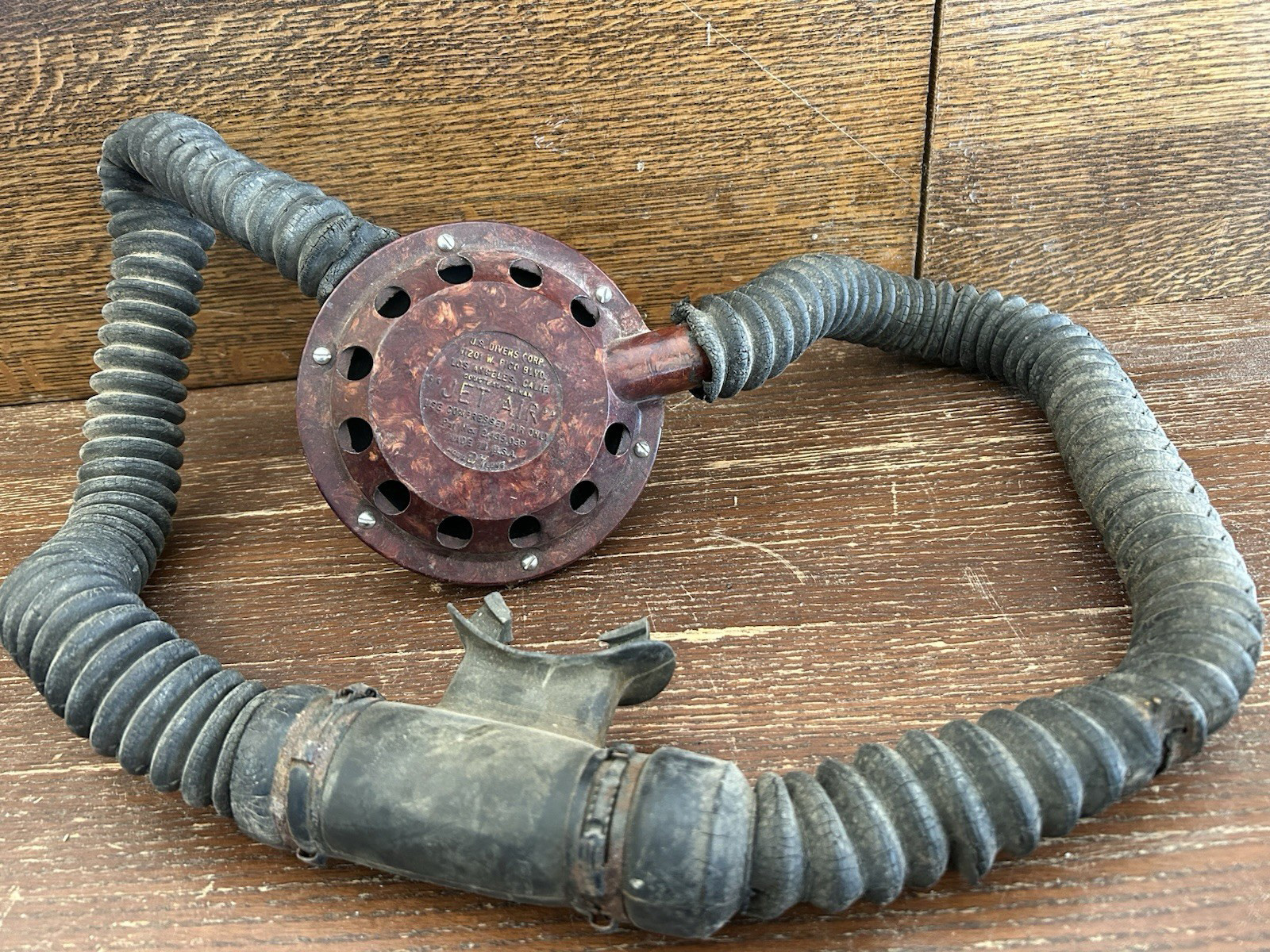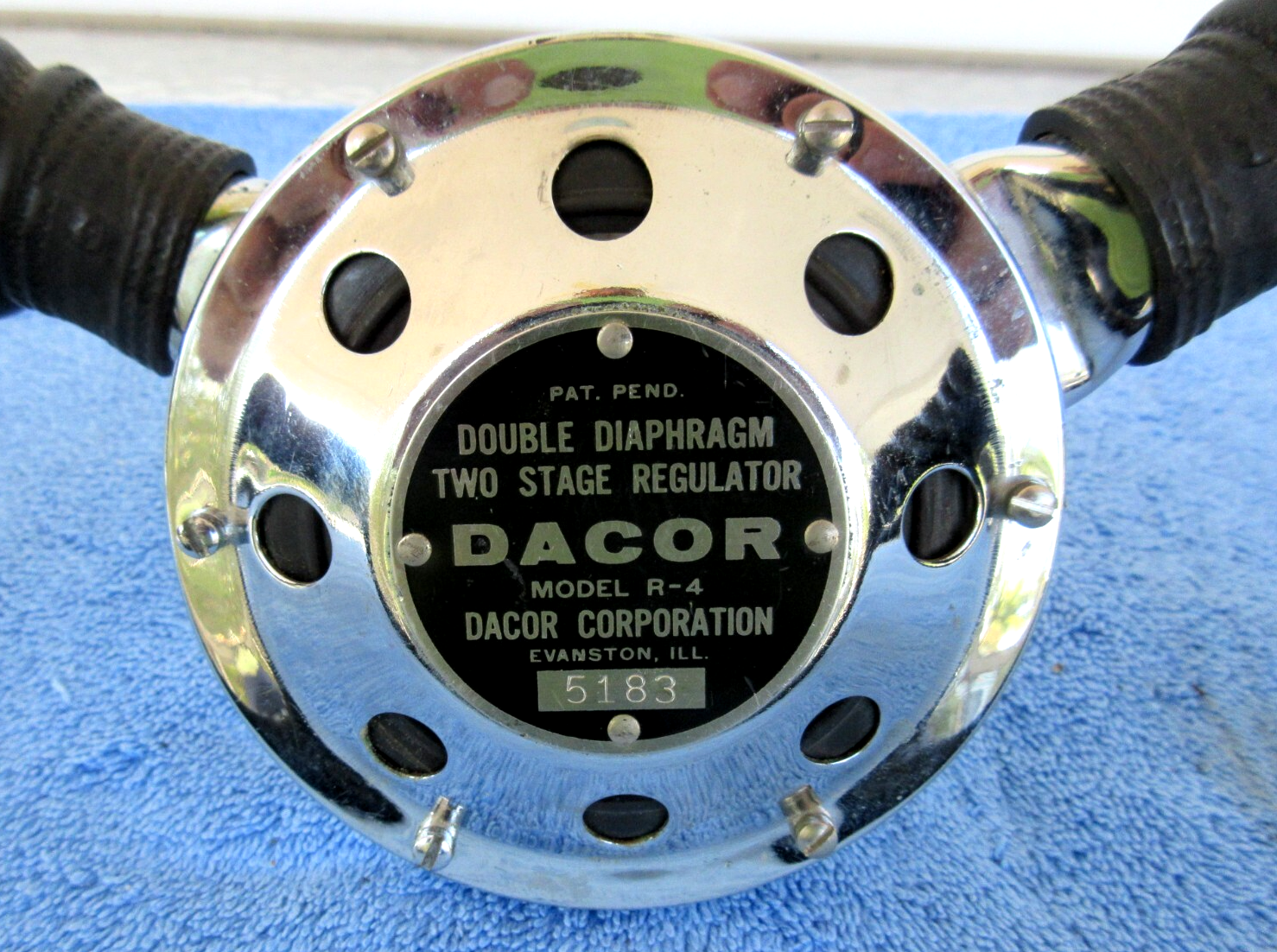The 1956 U.S. Divers Jet Air Aqua-Lung DY regulator, often associated with Jacques-Yves Cousteau, is a significant piece in the evolution of scuba diving equipment. Introduced in 1956, it was designed as an affordable, durable option for divers, making underwater exploration more accessible during the mid-20th century.
Materials: The original 1956 model featured a housing made from brown phenolic resin, a high-impact fiberglass compound known for its durability and resistance to water, chemicals, and heat. This material choice contributed to the regulator’s ruggedness and cost-effectiveness.
Labeling: Early versions had raised lettering molded directly into the casing, while later models (1961-63) transitioned to black cycolac (a type of ABS plastic) with decal-type labels, reflecting evolving design trends.
Mechanism: The Jet Air was a single-stage, unbalanced upstream regulator, lacking a venturi assist. This design made it less efficient in airflow compared to two-stage regulators but was simpler and more affordable.
Hose Configuration: It utilized a one-piece hose without check valves, differing from some contemporaries that employed multi-piece hoses with check valves to prevent flooding.
• Affordability: Marketed as a budget-friendly option, the Jet Air was particularly popular among diving schools and rental operations, providing reliable performance without the higher costs associated with more advanced models.
• Production Timeline: After its initial release in 1956-57, the Jet Air was absent from catalogs between 1958 and 1960 but reappeared from 1961 to 1963 with updated materials and design features .
• Collectibility: Today, the Jet Air is a sought-after collector’s item, valued for its historical significance and unique design. Its association with early recreational diving and affordability at the time make it a notable piece for enthusiasts of vintage scuba gear.
For those interested in vintage scuba equipment, the Jet Air represents a pivotal moment in diving history, balancing innovation with accessibility.




